Catherine Herridge Reveals How CBS Stonewalled Hunter Biden Laptop Story, Seized Her Files
Veteran investigative journalist Catherine Herridge has spilled the tea over her departure from CBS in 2004 - including the controversy over the Hunter Biden laptop scandal - in which she says she authenticated multiple records as early as October 2000, only to encounter internal resistance which prevented the story from being fully pursued or aired when it was ready.
Transcript:
This week on "Straight to the Point," a personal message. In 2025, our team bet big on independent journalism. We believe that you were tired of talking points TV, you were tired of the stale predictable formats on Sunday, and that you were open to something new.
A recent Gallup poll reinforced our reporting. It found less than 30 percent of Americans are confident the media covers the news fully, accurately, and fairly. I experienced this myself as a CBS News Senior Investigative Correspondent assigned to the Hunter Biden probe.
After I left, I wanted to be transparent about the blocks I faced at CBS News. At that time, CBS News was under different management and did not comment. I think one of the obvious questions is why am I sitting here talking about my time at CBS News?
I've always had deep respect for my former employers, but in this case, I've had so many questions about my time at CBS. I'm taking a pause and a moment here to try and answer those questions. I think it's better to hear it from me than to hear it from someone else.
I'd wanted to work at CBS News as long as I can remember. The first time I thought about CBS News was when I was an intern at ABC News in London and I was surrounded by so many experienced foreign correspondents. Some of them had been in Vietnam.
Some of them had worked at CBS News. It just seemed that CBS was a place for independent enterprise reporting. I never imagined that I'd be working at 60.
Getting a job at CBS at 55, to me, was an acknowledgment that the industry was really changing and that it was recognizing women who were deeply sourced and deeply experienced in national security. I was let go in February of 2024. We knew layoffs were coming.
I was not expecting to be laid off. I don't think it was a function of my performance at CBS News. I'd been part of an Emmy-winning team.
I'd had multiple Emmy nominations. We'd won a top environmental prize for our reporting. I'm very proud of that reporting still.
It impacted a million veterans and expanded their benefits. That morning, there was an email, a company-wide saying, there are going to be layoffs. Literally, within maybe six or seven minutes, I had a text message, text message or email from my bureau chief, Mark Lima, saying, I need you to hop on a Zoom call.
My husband said to me, what are you doing today? I said, I think I'm getting laid off. And I got on the Zoom call, the human resources person was there, and they told me that my job was being terminated and that I was locked out of the office, locked out of my emails, and they would get my personal effects to me sometime down the road.
I felt a little numb when it happened. What was more surprising to me is that CBS News seized my reporting files. In October of 2020, I was asked by a senior CBS News executive, Ingrid Cyprian-Matthews, to get confirmed reporting about the Hunter Biden story.
So I brought to her several records where I had done due diligence. I'd done a lot of research. I was highly confident that this was confirmed reporting from the laptop.
What I can tell you is that it would have been standard practice for the investigative unit to be tasked with digging deeper into that story to develop our own reporting, and that didn't happen. And that was disappointing to me. It was disappointing because I felt this was an opportunity for CBS News to really lead, to separate itself from the other networks.
But we missed that opportunity. That was not my call. It was frustrating for me.
I did my part. I got the records like I was asked, but a decision was made somewhere higher up within CBS just not to pursue it at that time. When I saw the 60 Minutes report with Lesley Stahl and she says to President Trump, we can't verify it, I just felt a little sick because I knew that I had been able to authenticate, confirm a handful of documents.
And it told me there was a lot more there. And if you put a lot of reporting muscle behind it, you could verify a lot of those records. I don't know if it was a case of the left hand in the news division not knowing what the right hand at 60 Minutes was doing.
I can't answer that question. When Nora O'Donnell was asking then-candidate Biden about it, about the laptop and whether it was a Russian information operation, this senior executive, Ingrid Cyprian-Matthews, she writes, Nora, looking for all confirmed reporting. Do you have all your confirmed reporting on Hunter's story in a note?
And I respond, yes. I tell her what it is. Nora, looking for all confirmed reporting.
Is there a Hunter connection to these documents? Yes, all of them in your inbox. And then I texted the documents and it was the million dollar retainer.
And it looks like some additional text messages from Hunter Biden to a family member. So when Nora O'Donnell had that question, I thought, did this information never reach her? I was asked to get confirmed reporting for her.
I don't know what happened there. I never asked her. I didn't feel that it was a welcome question.
There was no evidence that I had come across in October of 2020 that indicated that this was a Russian information operation. The former intelligence officials, several dozen, said in their statement that it had all the classic earmarks of a Russian information operation. They kind of hedged their words, but there didn't seem to be any evidence of that.
All of the records that I was working with, that I was validating, that I was doing due diligence, I didn't see that. Everything was lining up, in fact. And what bothered me about the letter from the 50 plus former intelligence officials is it just seemed to be this very dangerous intersection between the intelligence community and the political cycle.
Because I felt that it was sort of stepping over a line and that their actions had diminished the stature of their old jobs as CIA director or as the top intelligence official, the director of national intelligence. I'd never seen anything like this before, and I don't think we've seen anything like it since. I was assigned the Hunter Biden story by the very top of CBS.
George Cheeks said to me on multiple occasions that this was a story of the highest priority for the network and that it was a high priority for his boss, Shari Redstone. So I took on that assignment and I did it to the best of my ability. Cheeks said to me, we want to have accountability, speak truth to power on both sides of the aisle, and that really sit well with me.
So I went after it the way I would go after any of these investigations. It was a very hard assignment. There were corners of support in the company for it, and there were corners of support who understood the value of investigating the Hunter Biden story.
But there were some elements within CBS News that were just resistant to it. It didn't matter what the facts of the case really were. And this bothered me as a journalist a lot.
And I wrestled with it a lot. And people might say, well, then why didn't you leave? Why didn't you quit?
And the answer is, I felt I had an obligation to the senior executives at CBS to carry out their directive, to do my very best to run down that story, even if there were internal blocks that I faced. We eventually broadcast a story about the Hunter Biden laptop after the midterm elections in 2022. We commissioned a forensic review.
I got a copy of the laptop data. I have it here still. I went to a lot of effort to get the cleanest copy of the laptop data, the same data that was provided to the FBI, because I didn't want to have any professional journalistic risk for CBS News.
I wanted this to be totally locked down. When we did the story, we did it after the midterms. I argued against that because it was ready before the midterms.
And my training is that you should always do the story when it's ready to go. You should not be dictated by the political cycle. Once we got the laptop story on the morning news, I felt that there was so much there that we could still do.
For example, in the text messages, there's unfortunately the use of the N-word, the liberal use of the N-word. I thought this was worthy of a story, but I was told that it was not something that interested CBS News. Then I asked for a forensic review of the laptop, and we found that there were more than half a dozen emails that were likely used by Joe Biden.
I thought that was a story. But the answer that came back was, well, we need to know what the content is of the emails. But that was going to be a years-long process.
So there were a lot of reasons I was told not to do it, not to pursue it. I spent a lot of my time at CBS following the Hunter Biden story. And one of the things that really struck me is this kind of disconnect.
I didn't understand how a senior executive like George Cheeks could tell me that this was a high priority for the network and for his boss, and yet the executives at CBS News, show producers, anchors, could refuse that. I came to the conclusion that they must have felt that they were more powerful than George Cheeks, which was astonishing to me. I'd never worked at a place where a directive from the top would be so defied.
I had conversations with some of the reporters connected to the Twitter files, and I was, in my head, thinking that there might be an opportunity to tell that story on CBS News. We had a number of topics under discussion. They didn't go as far as we had hoped.
But at the end of the day, this opportunity to interview Elon Musk was developing. So I went to the CBS executives, and I said, this is the opportunity that we have. He's saying, I want to do it live and on my platform.
He's one of the most influential human beings on the planet. And the reaction from the executives was, well, we can't do it live. And I was like, what do you mean we can't do it live?
He's like, well, we don't know what he's going to say. I was like, well, I'm thinking, isn't that the point of journalism? You don't know what the person's going to say?
Well, you know, it has to be taped. We have to have the ability to edit it. It has to be on our platform.
We have to control the platform. We talked at one point about whether we could do it sort of like a simulcast between the streaming network and maybe X. But everything just got shut down.
It's one of the biggest interviews you could ever have. I felt so ashamed, frankly, that I never went back to Elon Musk and said, listen, they want to do it, but they've set all these conditions on it. I couldn't do that.
This is someone whose DNA is free speech. And how do you tell someone who's committed to free speech that your network can only do it taped and only if they edit it and it can only be on their platform? I just I couldn't go back to him with that.
Well, if you're an investigator, you always look at things through an investigative lens. And when my job was terminated at CBS, I took a look into the one sheet. This is a document they give you that outlines the terms of your separation.
And I went into the the metadata. And what I saw in the metadata is that my one sheet was created on February 9th at 515 p.m. And that is a Friday. And it is one day after I covered special counsel Robert Herr's investigation and final report into President Biden.
I reported the facts of that investigation, that it was highly critical of the president, that it described him as sort of a nice old man with a bad memory, and that he couldn't be prosecuted for that reason, among others. So I found the timing of that pretty significant. On top of the fact that I was given an assignment that was very difficult internally, but I was fully committed to.
And I did everything I could to put CBS first on a story that was not popular among a lot of people in that network. The day my job was terminated, I sent an email to George Cheeks, who's the head of CBS, and Wendy McMahon, she's head of sort of CBS News and Stations. I had a relationship with both of them.
And I said, I would rather work for the months that are left on my contract for a handful of reasons. First and foremost, we had just done a story on veterans who had been denied benefits due to their toxic exposure after 9-11. And we were so close to getting benefits for these veterans.
A whistleblower had come forward. It was really finally within reach for 15,000 veterans. And the answer that came back was, if you can get that story done, Catherine, in two days, then you can do it.
Otherwise, we're just dropping it. And I felt this was such a disservice to America's veterans, 15,000 and their families. We had worked for four or five years on this investigation.
We'd been able to move forward legislation. And we were this close to getting benefits for them. And then the curtain was pulled down by the CBS News executives.
I was so determined not to let go of that story, that a general I know connected me with Jon Stewart. And Jon Stewart is a great human being. And he picked up the baton, and he said he would help me get it over the finish line.
And recently, we saw an expansion of the benefits for these veterans. And I feel a little choked up saying it, because it was such a victory for them. And the fact that CBS really abandoned these veterans was a tremendous disappointment to me.
When I look at the situation at CBS News and 60 Minutes and the Kamala Harris interview, to me, it just begs for transparency. My training has always been that when you sit down with a major newsmaker, you have a special responsibility. You need to be asking questions over a broad range of topics.
And then you need to release the transcript, because you hope that other news organizations pick up the headlines and run with it beyond what you put on your network broadcast. I was also taught that releasing the transcript is about accountability and transparency, and the correspondent, the producers, the editors, the crews, standing by the integrity of the final product. I think this is especially so when you have a candidate who is running to be president of the United States.
And for all of those reasons, I've said it's an imperative, I've been very open about this, that releasing the transcript is about accountability and transparency. And there's a precedent for doing this at CBS News. When I interviewed then President Trump at the height of the COVID-19 pandemic, I advocated for, and they agreed to post the entire transcript on their website.
Same treatment for then Attorney General Bill Barr. And more recently, 60 Minutes posted the full unedited interview of their sit-down interview with Jerome Powell, the Fed chair. So there's plenty of precedent for CBS News to release the full unedited transcripts.
And I think that given the questions about the internal edits in the Kamala Harris interview, it just makes sense to me to release them and to clear the air and to stand behind the integrity of your report. I took some time after I lost my job to educate myself about the marketplace. And I was really surprised at how much the marketplace had changed in the last five years.
There's just been a tremendous erosion of the audience with the network newscasts, also with cable news. And there's just been this explosion of smaller independent newsrooms on the platforms like X, like Instagram, like YouTube. And I made a decision that I would work independently, that I would tell the stories that I couldn't tell before.
And there's something very freeing about that. I feel that this chapter in my career, there are a lot of stories that I want to get finished before I retire. And so I've made those a primary focus.
It's a whole new way of doing business. But I come back to the idea that content is king, and that the journalism matters. And that's my focus now, that the facts have a power all their own.
And we are taking these investigations on X, we're doing a newsletter, the writing skills, these are muscles I haven't used in this way for a long time. So it's kind of exciting to do that again. And then to have that kind of direct feedback, almost like the direct consumer feedback from your audience, which I didn't feel I had at a big corporate entity.
I grew up in corporate media. Corporate media will always have an important place at the table. There's no question in my mind.
But what's exciting now is that we have a diversity of voices through independent journalists like myself, and then these smaller digital newsrooms. There's no question that X is the platform with the greatest reach. And when I say the greatest reach, it's not just the numbers, but it's the individuals that you can have this contact with, whether it's people who are very senior in politics, major business leaders.
We were super thrilled when Elon Musk subscribed to our account. That was a huge compliment. So it's not just the size of the audience, it's the diversity of the audience, and it's being able to reach out to a lot of different types of people, the powerful, the decision makers, but then also the everyday consumers of information.
I feel like on X, the people who are following the account are a lot more engaged in the news. They're super consumers of information. You can't argue with the numbers.
I had a conversation with our bureau chief in Washington, Mark Lima, and we were talking about interviews on X. And there was one in particular, I think it was like 35 or 40 million views. And he said to me, that's not a real number.
And I said, well, neither is 4.5 on the evening news. But if I had to choose, I would take the 40 million views on X over the 4.5 million views on the evening news, because that's where the growth is. That's where sort of the diverse audience is.
And I feel like this is the next chapter for media. After I lost my job, and I had my file seized, I was then held in contempt of court. And I tell people that the crisis has really been transformative in many, many ways.
And free speech, the protection of confidential sources, they really are my North Star now. It was all over the media, the fact that CBS News seized my records. That is not a standard practice in this business.
Everywhere else I have left, the custom is for the reporter to take their records with them, not for the corporation to seize them. My position has always been that I was grateful for the work at CBS News. If they don't want me to work there anymore, that is their call.
But taking my reporting records crossed a red line that should never be crossed again in the future. These files, I had calls from sources I had worked with for years, who wanted to know whether the seizure of my records by CBS News was going to put their identities in jeopardy. I wanted to tell them it was not possible, but I could no longer offer that assurance.
Nothing is more sacred than the pledge of confidentiality to your sources. I'm fighting in the courts right now for that. And I'm not here to litigate this, but I can tell you that source protection, the First Amendment, a free press, these are my North Star.
One of my concerns is that when a corporation takes your reporting records, it makes it harder for you to work in the future. And that shuts down journalism. And if you believe journalism is at the foundation of our democracy, that is a position that just cannot stand.
This may look very glossy and highly produced, but I've got to emphasize, this is a small ragtag team that really makes it possible every week. So thank you to everyone behind the cameras and thank you to everyone who's handling these edits. In 2026, you can expect more of Straight to the Point with Newsmaker Interviews.
We have total respect for people who sit down with us because we take on tough topics with direct questions. Not everyone can handle it. Second, more investigations.
That's about real people, real problems, and real accountability. Actually demanding the government institutions keep their end of the deal and that they have the back of our service members, our spies and our diplomats. And then finally, more whistleblower investigations.
Whistleblowers, they're so special. I feel like this is the part of my work that I'm so grateful for, because they are coming forward for something bigger than themselves. And we are so grateful that they trust us here at Straight to the Point.
And we are so grateful that you have trusted us in 2025. And here's to more in 2026. We'll see you soon on Straight to the Point.
h/t RealClearPolitics
Tyler Durden
Mon, 01/05/2026 - 23:00
 The Tesla logo on the hood of a car in Oslo, Norway, on Nov. 10, 2022. Victoria Klesty/Reuters
The Tesla logo on the hood of a car in Oslo, Norway, on Nov. 10, 2022. Victoria Klesty/Reuters


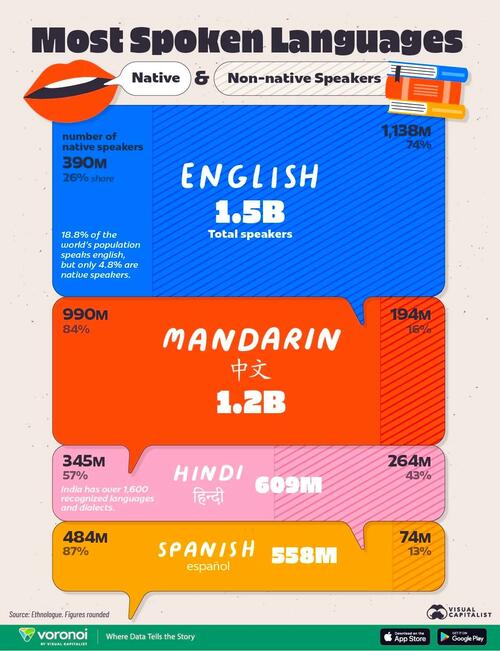




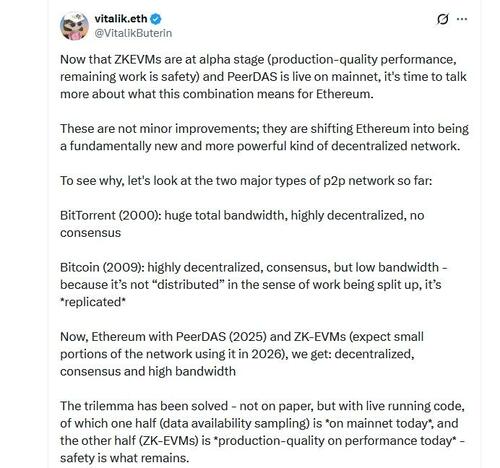
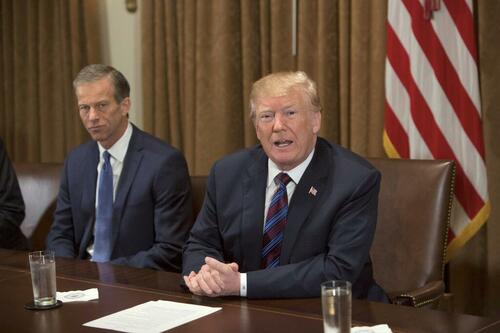 (Chris Kleponis – Pool/Getty Images)
(Chris Kleponis – Pool/Getty Images)
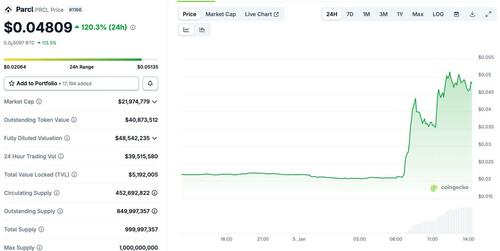
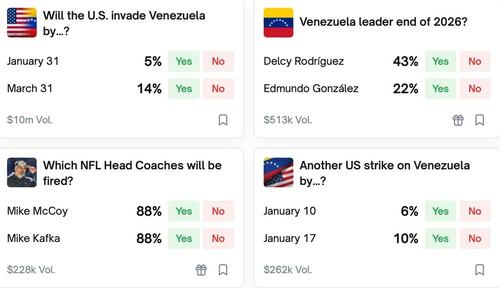

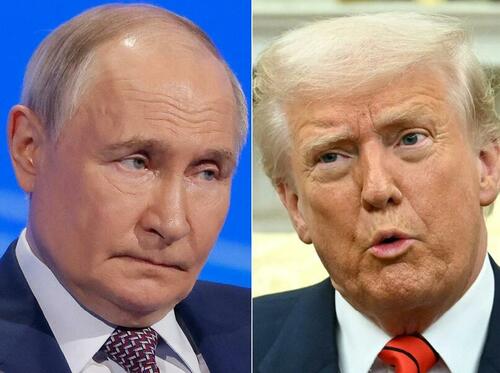 via Reuters
via Reuters


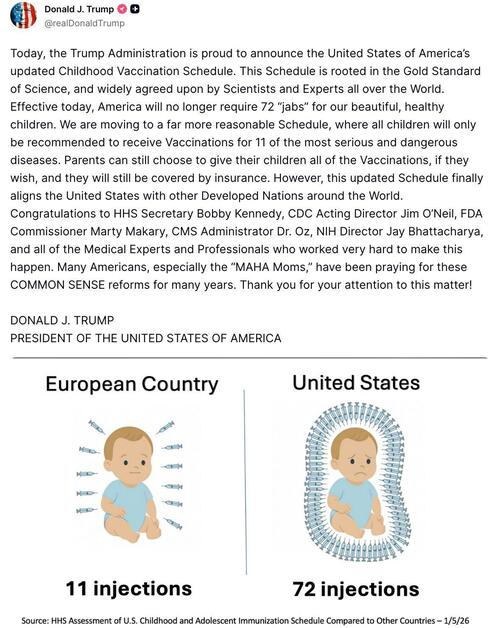
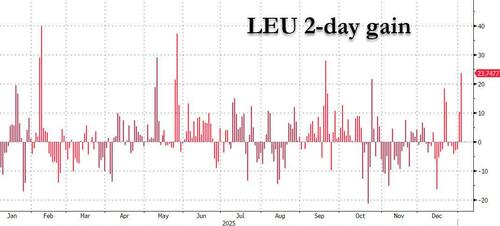

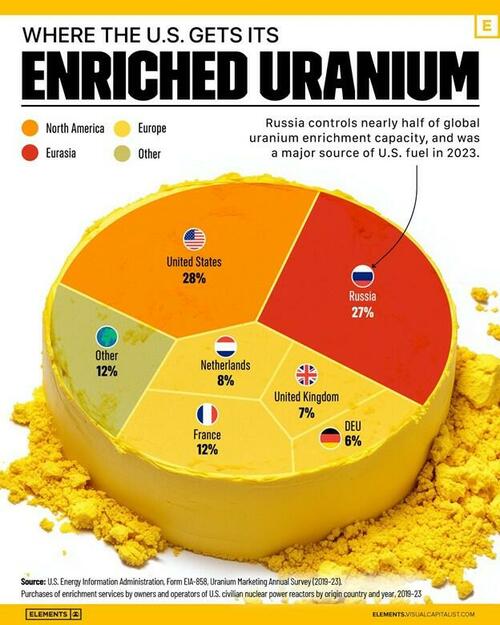
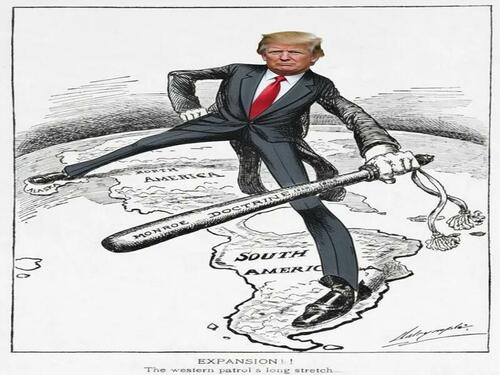
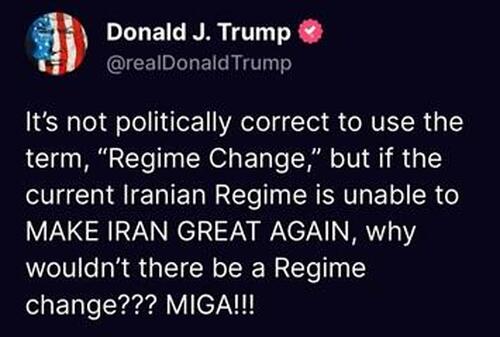
 Office of the Iranian Supreme Leader/West Asia News Agency/Reuters
Office of the Iranian Supreme Leader/West Asia News Agency/Reuters

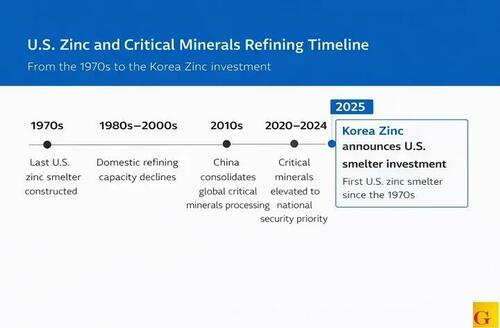
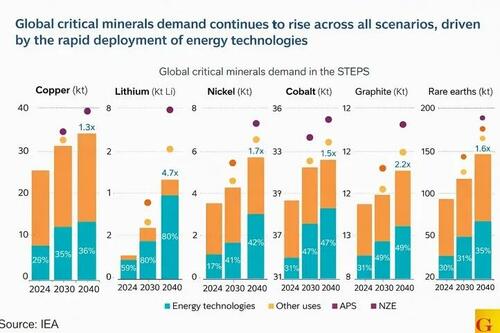
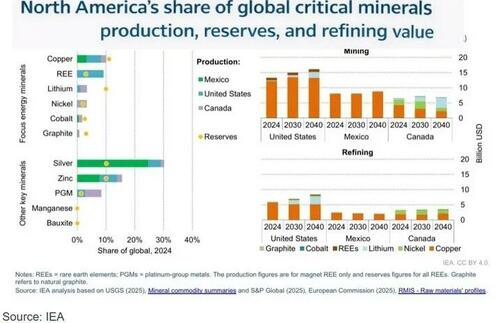
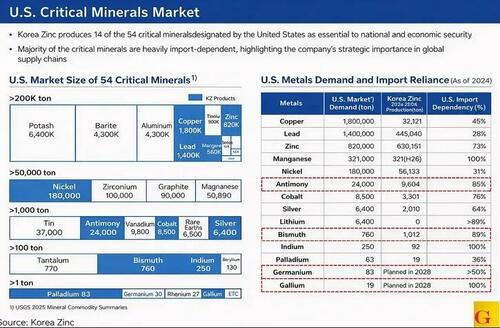


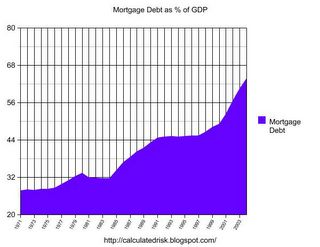
Recent comments